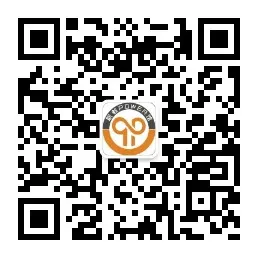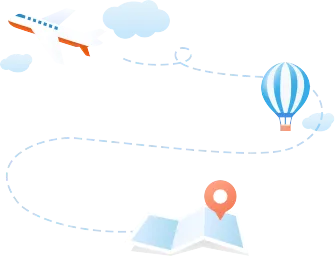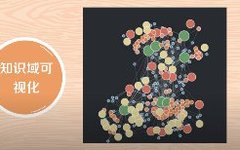1. What Is a Knowledge Graph
A Knowledge Graph, also known as knowledge domain visualization or knowledge domain mapping, is a series of various graphics that display the development process and structural relationships of knowledge. It uses visualization technology to describe knowledge resources and their carriers, to mine, analyze, construct, draw, and display knowledge and the interconnections between them. The Knowledge Graph integrates theories and methods from disciplines such as artificial intelligence, applied mathematics, graphics, and information visualization technology, and uses visual graphs to vividly present the core structure, development history, cutting-edge fields, and overall knowledge architecture of disciplines, achieving the goal of multidisciplinary integration.
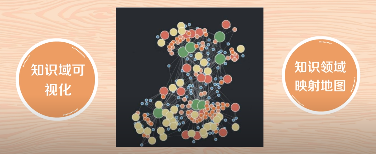
The construction of the Knowledge Graph lays the foundation for the current evolution of artificial intelligence from perceptual intelligence to cognitive intelligence. With the development of technology, artificial intelligence has achieved or surpassed human levels in perceptual intelligence fields such as “listening, speaking, and seeing,” but it is still in the early stages in the cognitive intelligence domain, which requires external knowledge, logical reasoning, or domain transfer. Cognitive intelligence will draw inspiration from cognitive psychology, brain science, and human social history, using Knowledge Graphs, causal reasoning, and continuous learning technologies to establish effective mechanisms for stable acquisition and expression of knowledge, enabling machines to understand and utilize knowledge, thus achieving a key breakthrough from perceptual intelligence to cognitive intelligence.
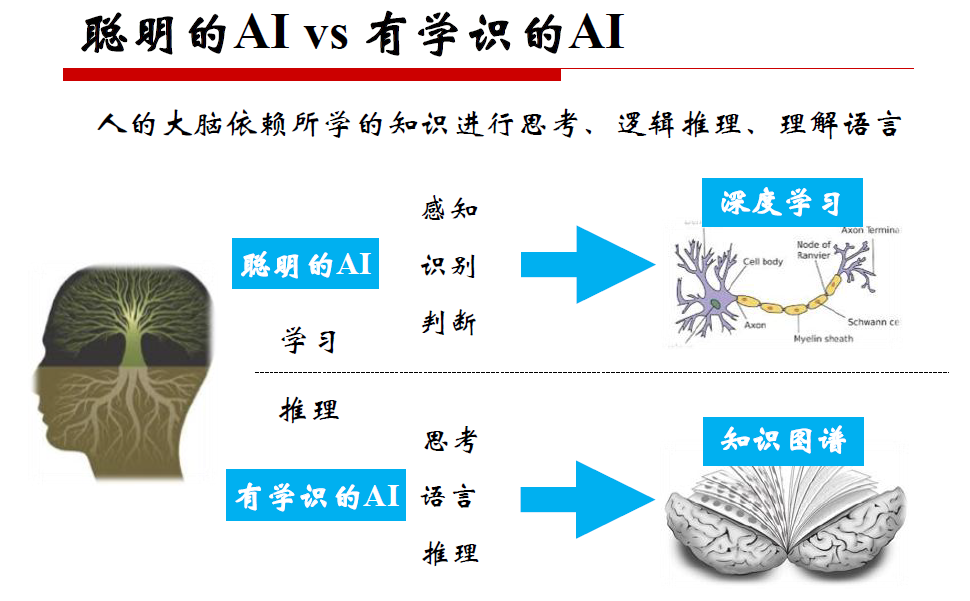
2. What Is a Course Knowledge Graph
A Course Knowledge Graph is the structured and visualized result of course content, created by utilizing subject experts and AI technology to manually or automatically organize course content, extract course knowledge points, and establish a network structure of relationships between knowledge points and course resources.
The Knowledge Graph serves as a refinement and summary of course content and has wide applications. Especially in online education, the combination of Knowledge Graphs and AI recommendation algorithms can provide personalized education for each student based on their mastery of knowledge points, plan learning paths, and display learning status, thus achieving tailored teaching for each individual. Typical application scenarios include:
– Display of course knowledge point graphs
– Adaptive learning: display of learning paths, recommendation of learning resources, learning reports
– Learning assistance robots (automated course Q&A)
– Intelligent lesson preparation
The Course Knowledge Graph is a product of the integration of AI technology and education, and its various applications are at the forefront of AI + education, especially AI + online education. The vast online educational resources and the adaptive learning and recommendations based on Knowledge Graphs represent a significant disruption to the traditional education model of “one teacher for many students” that has lasted for thousands of years.
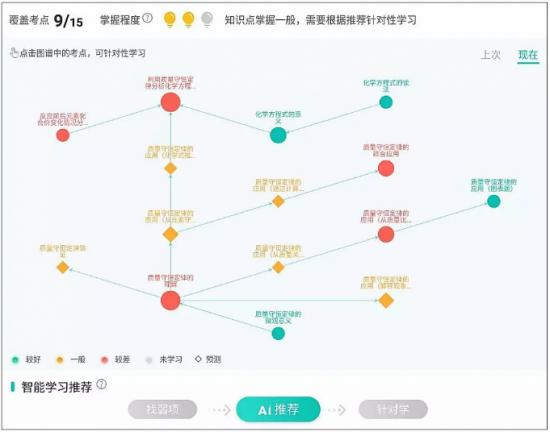
3. Aopeng Course Knowledge Graph
Aopeng Education, as a leading enterprise in online education, offers thousands of course resources covering dozens of subjects and hundreds of majors. There is an urgent need for the construction of course Knowledge Graphs, and it possesses unique data advantages such as courseware and corpus resources required for building Knowledge Graphs.
Since 2019, the engineering center has collaborated with the product center, student user department, and industry-education integration to conduct various attempts at building and applying course Knowledge Graphs. This has been done in phases and batches to increase the construction of Knowledge Graphs for courses/majors and related applications.
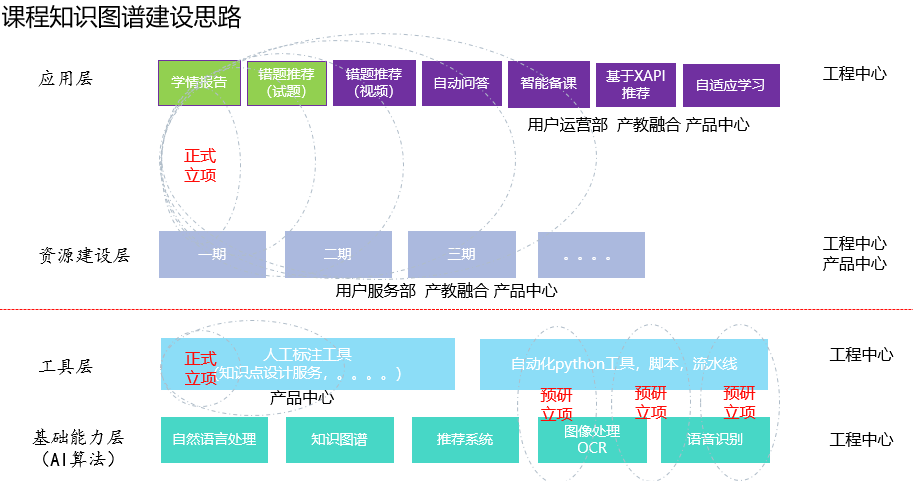
4. Current Achievements and Capabilities
Through continuous exploration, experimentation, and preliminary research on relevant technologies and algorithms by the AI innovation team of the engineering center, a semi-automated and semi-manual (90/10) method has been gradually developed for extracting course knowledge points, identifying overall relationships between knowledge points, and linking knowledge points with resources (videos, documents, exam questions).
The methods mainly include: video content analysis (OCR), audio content analysis (ASR), syllabus analysis (web scraping, data cleaning), knowledge point extraction (natural language processing), identification of overall relationships between knowledge points (natural language processing), and linking knowledge points with resources.
Depending on the different styles of each course and resource types, knowledge points are automatically extracted and recognized by AI technology, combined with manual correction, forming a production line that allows the construction of a course’s Knowledge Graph to be completed within 1-2 person-days. Based on feedback from teachers in the product center, constructing a Knowledge Graph manually for a course previously required half a month to a month of time. This shows that the AI technology’s automatic extraction production line method greatly improves the efficiency of constructing course Knowledge Graphs.
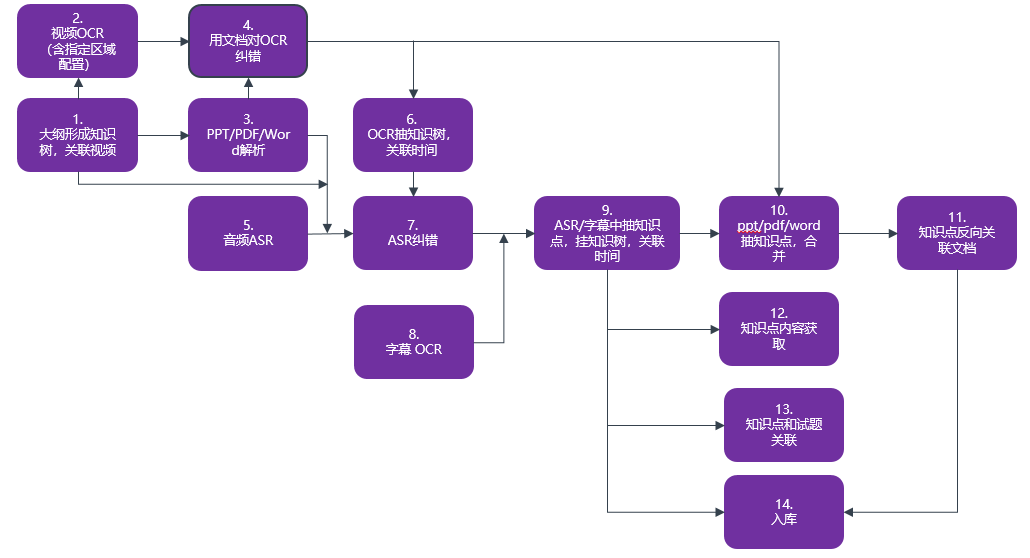
Course Knowledge Graph Construction Production Line
By comparing the knowledge points manually extracted by teachers and those automatically extracted by AI for the same course (“Introduction to Marxist Basic Principles”), it can be found that the knowledge points extracted by AI are more granular, with the quantity of AI-extracted knowledge points being four times that of manually extracted ones.

Comparison of manually extracted knowledge points (left) and AI-extracted knowledge points (right) for the same video segment
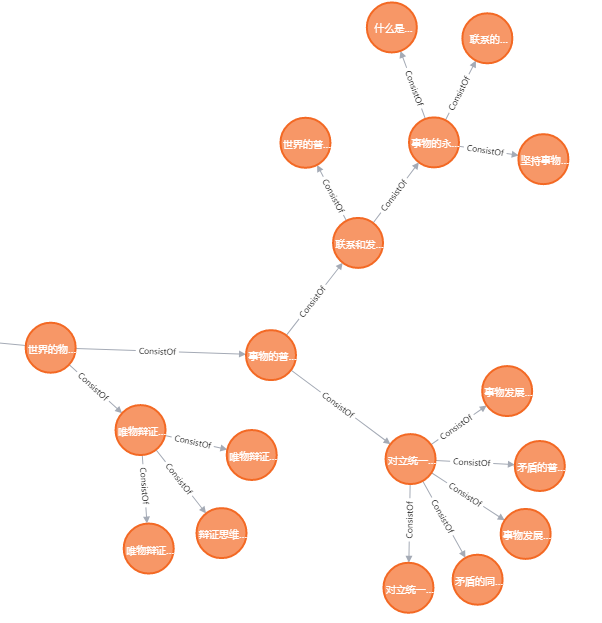
The hierarchical structure of knowledge points extracted by AI in the above video segment

AI-generated Knowledge Graph of the “Introduction to Marxist Basic Principles” course from Fujian Normal University
The total duration of the course is 14 hours and 29 minutes, with a total of 466 knowledge points extracted by AI.
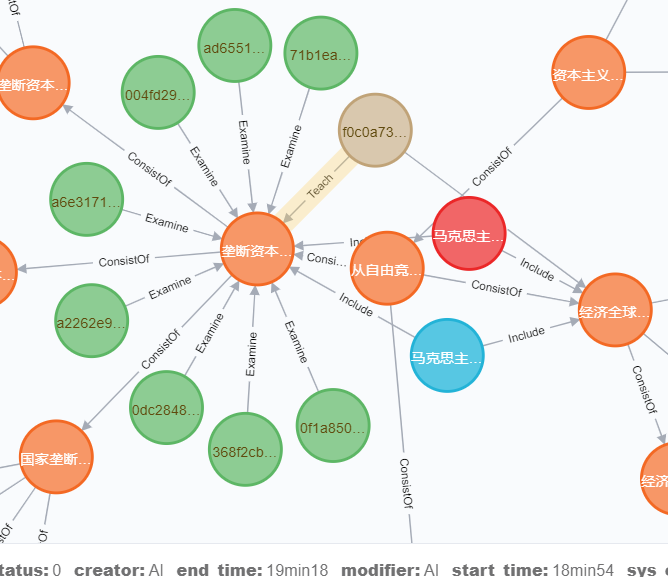
AI-generated Knowledge Graph of the “Introduction to Marxist Basic Principles” course from Fujian Normal University
Note: In the above image, the orange node represents a specific knowledge point, the green nodes represent associated exam questions, and the yellow nodes represent related videos. The “Teach” relationship attribute between the video and knowledge point contains information such as startTime and endTime, which can be used for precise video recommendations.
As of now, Aopeng has already developed 30 course Knowledge Graphs generated by teachers manually and 4 course Knowledge Graphs generated by AI technology, and various application scenarios have been developed based on them.
* Course learning status reports
* Question recommendations based on errors (error notebook)
* Precise video recommendations based on errors
* Automated Q&A based on FAQs (in development)
In the future, while continuously promoting the construction of more course Knowledge Graphs, more application scenarios will be developed based on the content of existing Knowledge Graphs.
5. Future Plans
The construction and application of Course Knowledge Graphs is an ongoing process. On one hand, the accuracy of AI algorithms and the level of automation in the production line can be further improved; on the other hand, the automatic discovery of more relationships between knowledge points (e.g., prerequisite relationship recognition) will lay a solid disciplinary knowledge foundation for applications such as adaptive learning planning. The introduction of external knowledge (e.g., Baidu Encyclopedia, Chinese Wikipedia) will greatly enhance the accuracy of the algorithms for constructing and applying Knowledge Graphs. The AI team will focus on continuously improving the construction and application capabilities of Knowledge Graphs in the following areas:
Construction Aspects
* Introduction of external encyclopedic professional knowledge (Baidu Encyclopedia, Chinese Wikipedia)
* Recognition of more relationships between knowledge points (prerequisite relationships, equivalence relationships, etc.)
* Generation of subject Knowledge Graphs (cross-course subject terminology graphs)
* OCR technology for automatic recognition of scientific formulas
* Automatic error correction of speech recognition results
* Online book Knowledge Graph construction platform
Application Aspects
* Automated Q&A based on Knowledge Graphs
* Applications of various inference and recommendation algorithms based on graph machine learning
* Collaborative filtering recommendation systems (based on XAPI user behavior collection)
* Intelligent lesson preparation
* Adaptive learning systems
6. Conclusion
The development and application of artificial intelligence technology is the most important and core technological trend of the 21st century. With the continuous release and maturation of related algorithms, artificial intelligence has already seen widespread application in fields such as facial recognition, intelligent recommendations, and intelligent customer service.
The AI + online education model based on Knowledge Graphs will lead to profound changes in educational and learning models. The AI innovation team at the engineering center will delve into this blue ocean of AI + education, continuously exploring and combining business innovation with technological innovation to create a unique technological moat for Aopeng online education.
Scan to Follow Us
